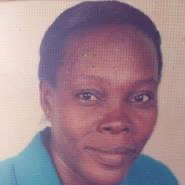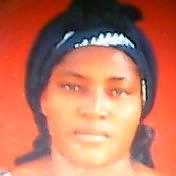International Journal of Mathematical Sciences and Computing (IJMSC)
IJMSC Vol. 4, No. 1, 8 Jan. 2018
Cover page and Table of Contents: PDF (size: 773KB)
A Mathematical Model for Capturing Cholera Spread and Containment Options
Full Text (PDF, 773KB), PP.15-40
Views: 0 Downloads: 0
Author(s)
Index Terms
Homotopy Perturbation Method, SIR model, Equilibrium, Stability Analysis, Reproduction number
Abstract
The explosive nature of cholera epidemic over the years in different parts of the world has been a subject of interest to scientists in proffering interventions towards controlling its spread. Over the years many models has been created by the following people Capaso and Pavari – Fontana (1973), Codeco (2001), Hartley, Tien (2009), Mukandivare (2009) etc. In the present study, we modify the Cholera model proposed by Mukandivare incorporating three (3) containment options such as vaccination, Therapeutic treatment and water treatment and solved the system analytically using Homotopy Perturbation Method. The results shows that with improved use of vaccination, therapy and proper sanitation we have a more healthy population. This research is therefore recommended to modelers who desire to know how homotopy perturbation methods works. The computations were done and further analyzed mathematically using a computer symbolic package MAPLE 13.
Cite This Paper
Falaye Adeyinka Adesuyi, Akarawak E.E.E., COLE A.T., Evans O. Patience, Oluyori David Adeyemi, Falaye Roseline Adunola, Adama Ndako Victor,"A Mathematical Model for Capturing Cholera Spread and Containment Options", International Journal of Mathematical Sciences and Computing(IJMSC), Vol.4, No.1, pp.15-40, 2018. DOI: 10.5815/ijmsc.2018.01.02
Reference
[1]Akinwande, N. I., Abubakar, S. (2013). “Approximate Solution of SIR Infectious Disease Model using Homotopy Perturbation Method” (HPM). Pacific Journal Science and Technology 14(2): 163 – 169.
[2]Akinwande, N.I. (2006). “On the Application of Differential Equations in the Mathematical Modelling of Population Dynamics”. 2nd School Science and Science Education Conference, Federal University of Techology: Minna, Nigeria.
[3]Benyah, F. Epidemiological Modelling and Analysis, Paper presented at 13th Edward A Bouchet/Abdus Salam workshop, University of Ghana, Legon, Accra, 9-13 July, 2007.
[4]Biazar, J. H. Aminikhah. (2009). “Study of Convergence of Homotopy Perturbation Method for systems of Partial Differential Equations”. Computer and Maths with Applications. 58:2221-2230.
[5]Capaso, V., S.L. Pavari-Fontana. A Mathematical Model for the 1973 Cholera Epidemic in the European Mediterranean region. Rev Epidém Santé Pub, 27:121 – 132, 1979.
[6]Codeco, C.T. (2001). Epidemic and Endemic Cholera: the role of the Aquatic Reservoir. BMC Infections Disease 1(1). Available from http://www.biomedcentral.com/1471-2334/1/1
[7]Fraser, C., Riley S. Anderson R. M. and Ferguson N. M. (2004).Factors that make an Infectious Disease Outbreak Controllable.Proceedings of the National Academy of Sciences of the USA.
[8]Jin Wang and Chairat Modnak: Modeling Cholera dynamics with controls Canadian Applied Mathematics Quarterly Volume 19, Number 3, Fall 2011.
[9]Jiya, M. (2010). “Application of Homotopy Perturbation Method (HPM) for the solution of some Non-Linear Differential Equations.”Pacific Journal Science and Technology 11(2).
[10]Mukandavire, Z, S. Liao, J. Wang, H.Gaff, D.L. Smith , J.G. Morris. Estimating the reproductive numbers for the 2008–2009 cholera outbreaks in Zimbabwe, PNAS Early edition, 2010.
[11]Ochoche Jeffrey M. A: Mathematical Model for the Transmission Dynamics of Cholera with Control Strategy, Department of Mathematics/Statistics/Computer Science, Federal University of Agriculture, Makurdi published in International Journal of Science and Technology (IJST) – Volume 2 No. 11, November, 2013 (798 – 802).
[12]P.T. Tian, S. Liao, J. Wang. Dynamical analysis and control strategies in modeling cholera.A monograph, 2010.
[13]WHO Weekly Epidemiological Reports from 2000 – 2013.
[14]R.T. Ashleigh, J. Tien, M. Eisenberg, J.D. David, M. Junling, N.F. David, Cholera Epidemic in Haiti, 2010: Using a Transmission Model to Explain Spatial Spread of Disease and Identify Optimal Control Interventions, Annals of internal medicine. 154:593-601, 2011.
[15]Yibeltal Negussie Bayleyegn (2009): Mathematical Analysis of a Model of Cholera Transmission Dynamics. African Institute for Mathematical Sciences (AIMS), South Africa.





